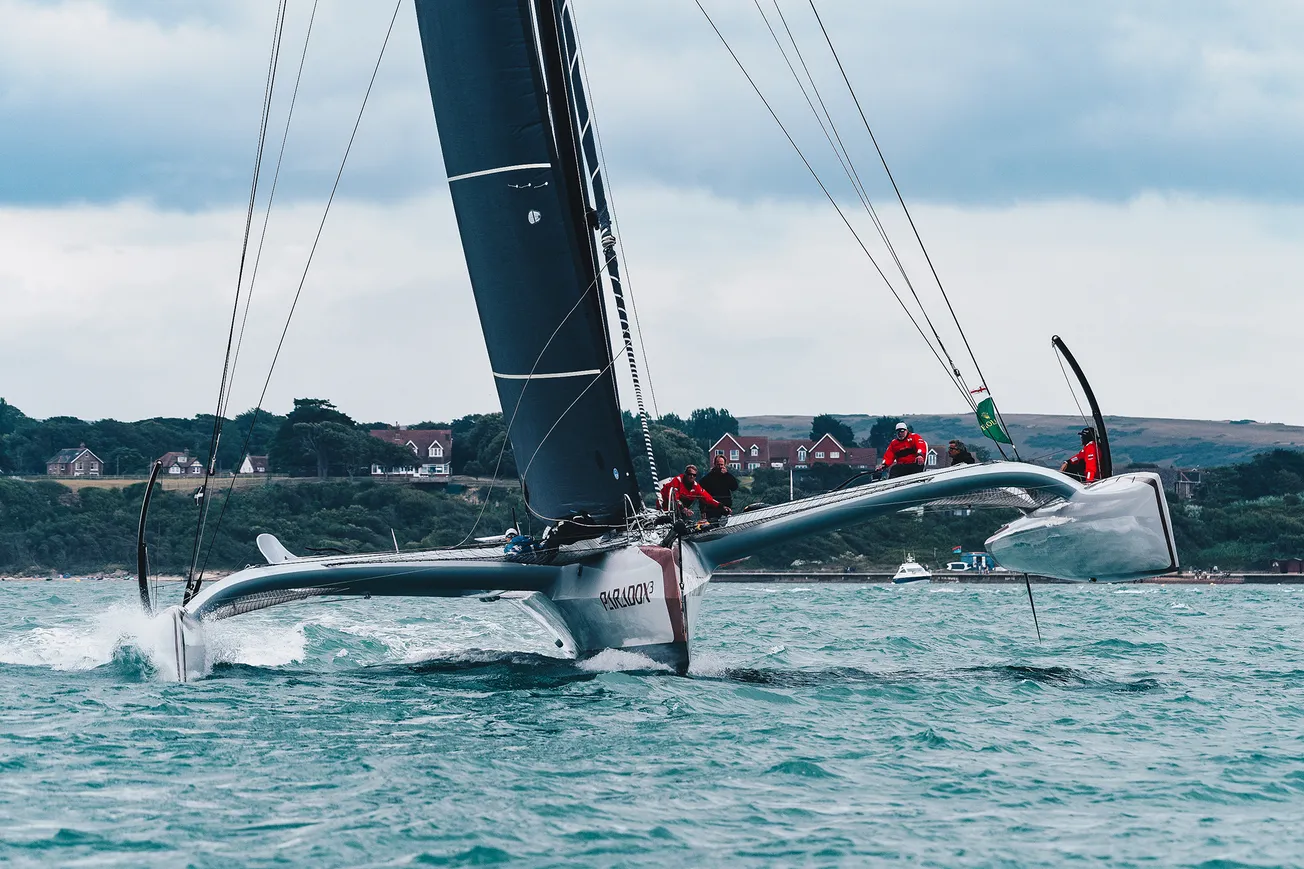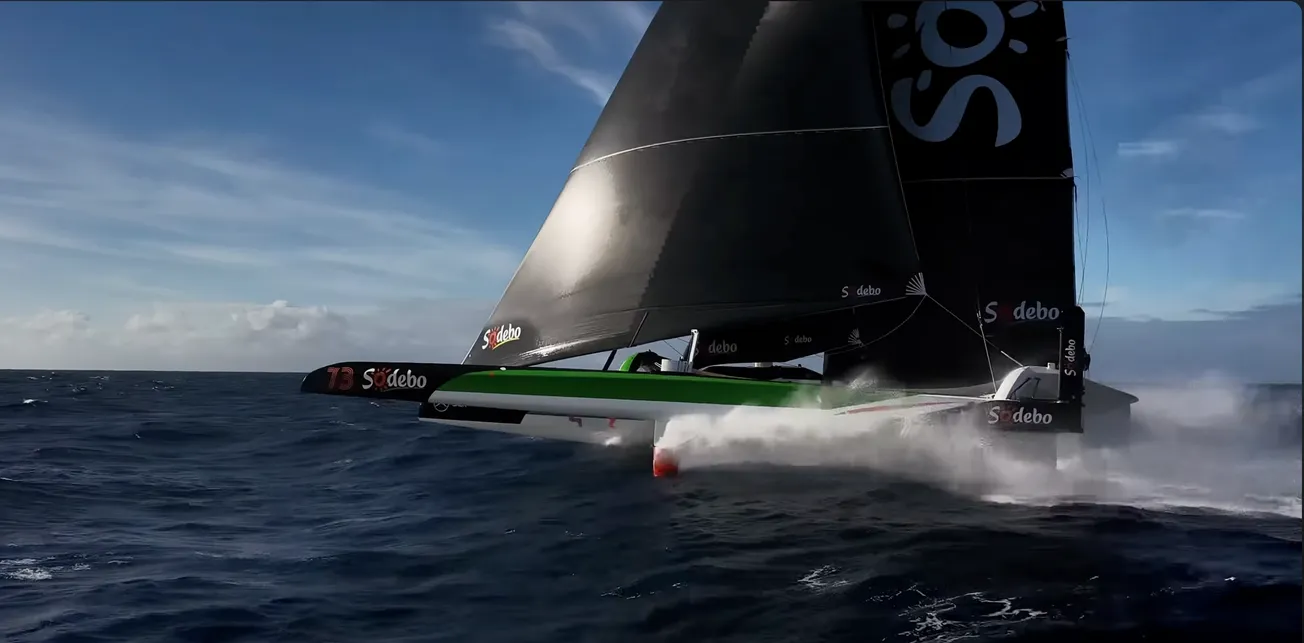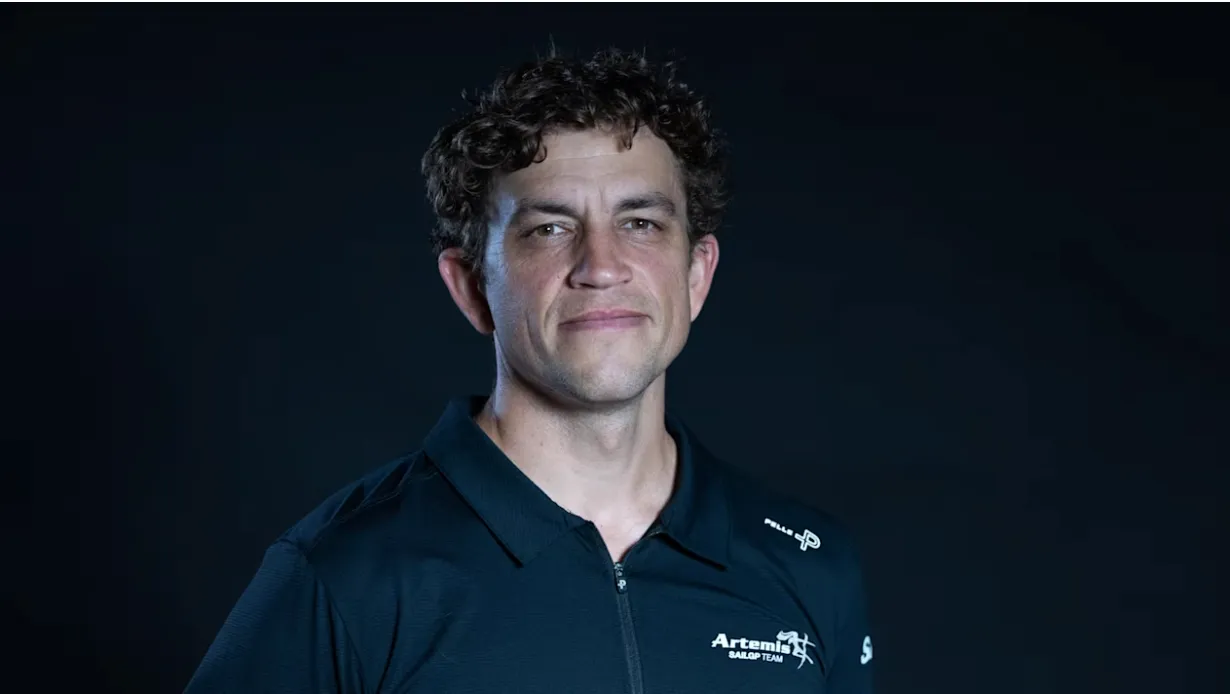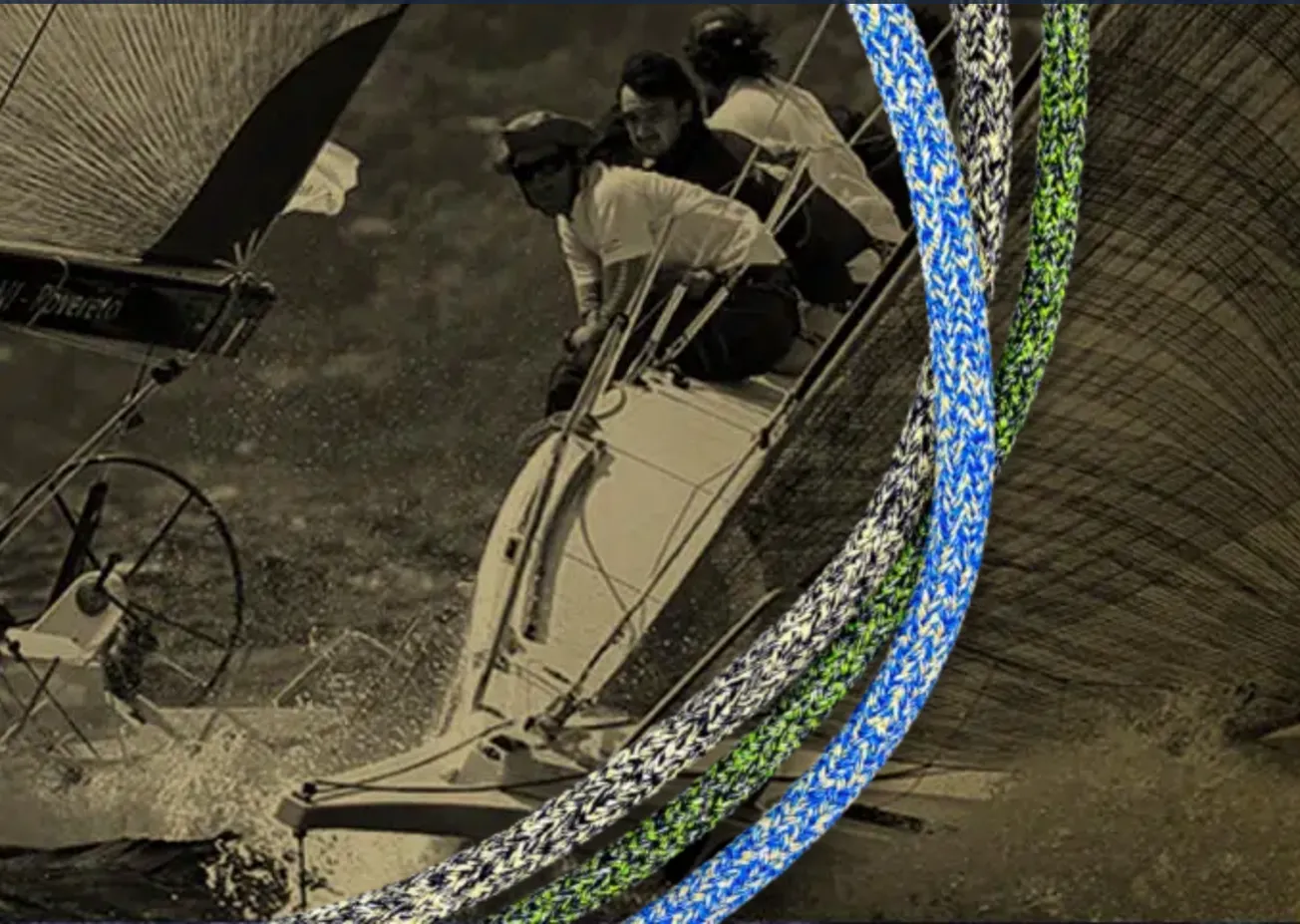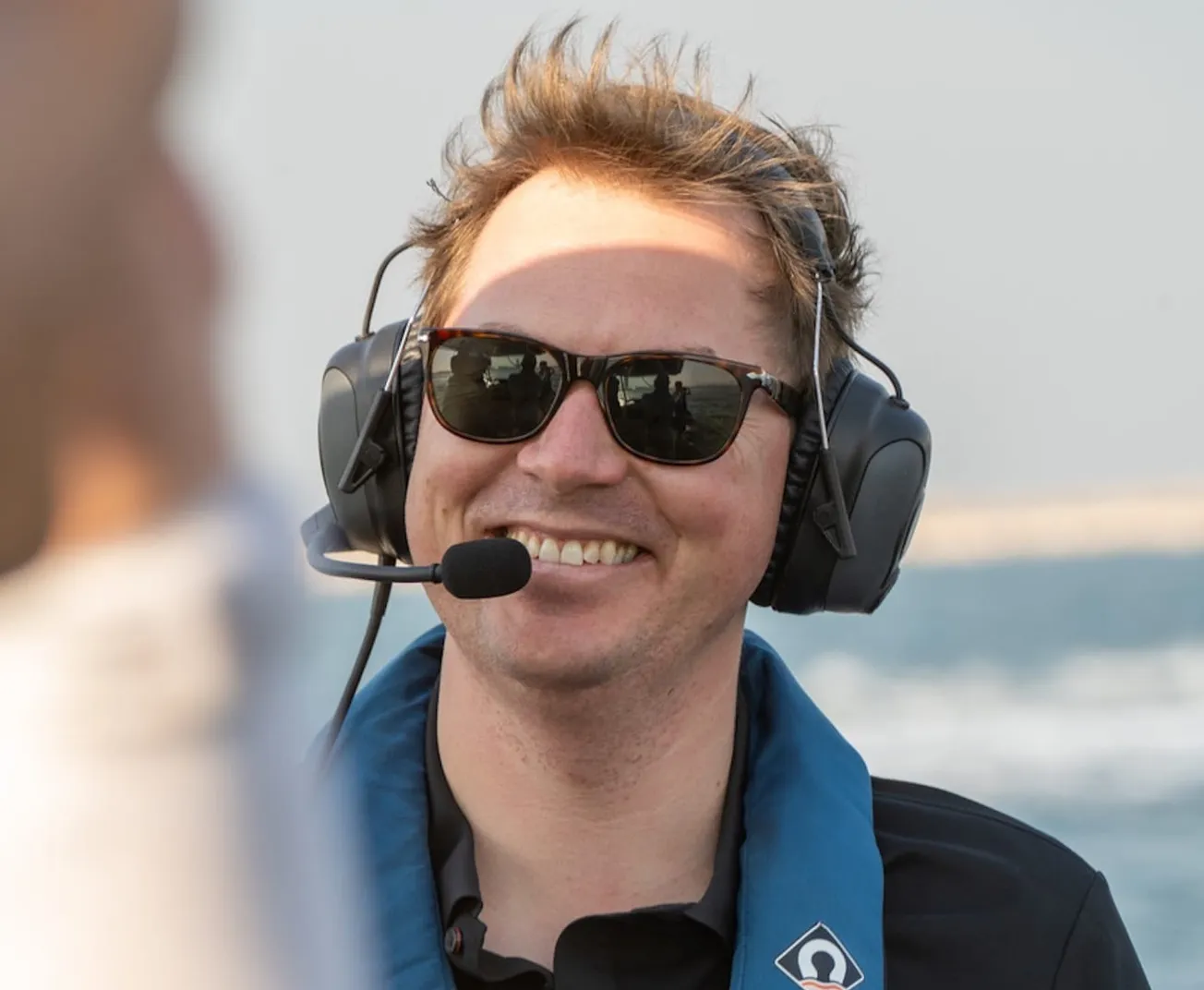

It was, by any measure, an audacious move.
Flynn, who originally discovered sailing in his 30s on Switzerland’s Lake Geneva, had enjoyed time on a modest Yingling keelboat— Olympic class, yes, but a world away from the turbocharged power of Paradox. After moving away from the lake, sailing took a backseat to life and family. It wasn’t until his early 50s that he made the decision to re-enter the sailing world—and when he did, he didn’t mess around.
“I always knew I’d come back to sailing,” Flynn explains. “I’d had the idea of buying a cruising catamaran, maybe something like an Outremer. I sailed on several likely candidates. But then a friend said, ‘You need to meet this guy.’ That guy was Clint Clemens, a trimaran fanatic from Newport RI – and he changed everything.”
Clemens introduced Flynn to the thrill of trimaran sailing by taking him out on his own 50-foot trimaran in Newport. That experience proved pivotal.
“It was just magic,” Flynn recalls. “I’d never seen anything move so fast and yet feel so comfortable, so friendly to sail. I was completely hooked.”
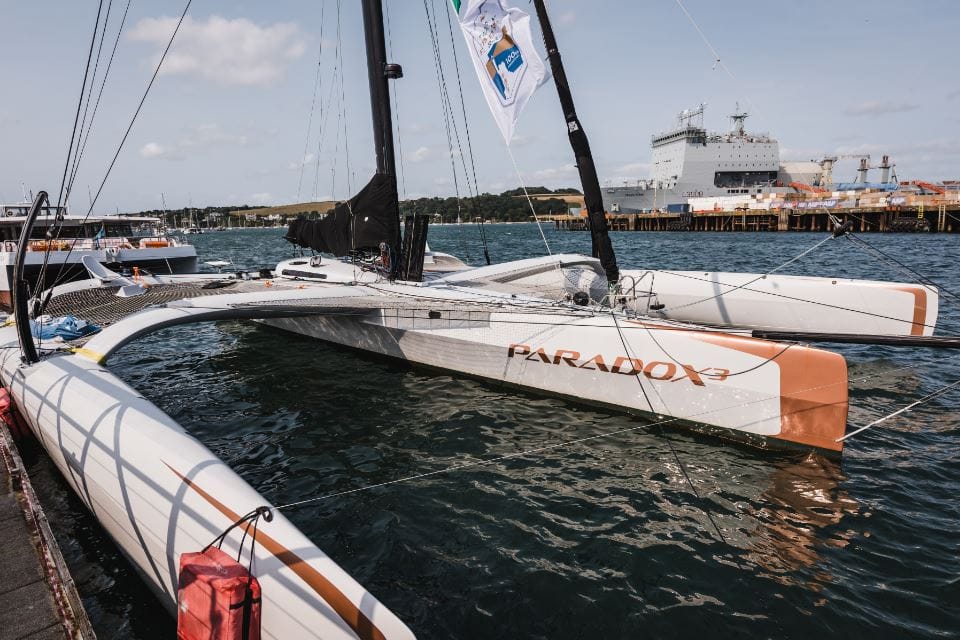
Enter Paradox
Flynn had first come across Paradox while researching multihulls online. A video of the boat ghosting up the River Dart in the early morning light stuck in his mind. At the time, Paradox wasn’t for sale – but it became a benchmark in his mind for what a performance cruising trimaran could be.
Fast forward to a light-air sail off Sardinia. Flynn was sailing with his British captain Adam Davis and they were musing about boats. Flynn remembered Paradox. On a whim, they searched for the boat online. To their surprise, it had just come back on the market.
“We were out at sea, on the edge of cell coverage,” Flynn laughs. “We turned the boat around, sailed back into range, and called the broker. We put the deal together right there.”
He hadn’t seen the boat in person.
“I knew it was the right one,” he says. “I knew what it could do.”
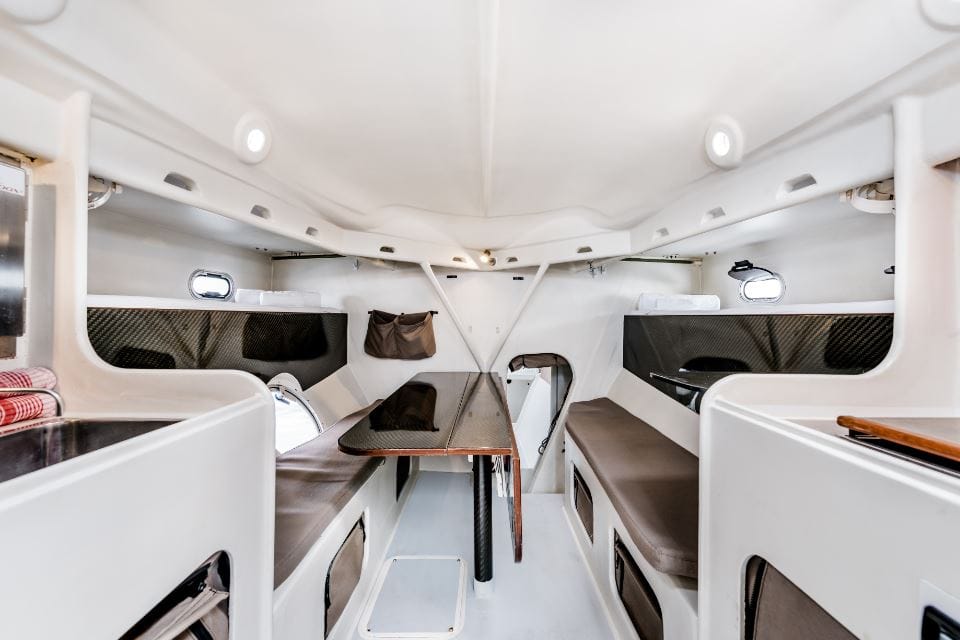
Racing DNA Meets Cruising Comfort
Originally built in 2010, Paradox was the brainchild of a passionate owner who wanted a race-capable trimaran that could also cruise comfortably. Designed by multihull legend Nigel Irens, she was created using the hull molds of Loïck Peyron’s legendary ORMA 60 Fujicolor, but with a reinforced structure, a shortened rig, and a more forgiving deck layout for offshore passage-making.
“She’s like an ORMA 60’s more sane cousin,” explains Flynn. “She’s built for offshore performance, but you can cruise in comfort too.”
And the racing pedigree is undeniable. Before Flynn owned her, Paradox had made a name for herself on the international offshore racing scene by taking multihull line honours in the 2013 and 2018 editions of the RORC Caribbean 600 race. She had won the 2015 Fastnet too and other famous offshore races.
It wasn’t just her speed that impressed Flynn—it was her dual identity. The name Paradox captures the contradiction: a boat that can win serious races, yet still be sailed short-handed, cruised comfortably, and lived aboard for extended periods.
After buying the boat, Flynn oversaw a comprehensive 2024 refit in Montenegro, where Paradox had been laid up during the pandemic. The refit, touching every system on board. And skipper Davis single-handedly managed the whole thing.
“We did everything,” Flynn says. “It wasn’t just cosmetic—it was structural, mechanical, electrical, the works.”
The team began with a rigorous non-destructive testing (NDT) process to confirm the boat’s core structural integrity. To their delight, the carbon construction and all of the structure came through with flying colors. But nearly everything else was overhauled or upgraded.
Rigging: Fully replaced, from standing rig to running lines, with new deck hardware and fittings throughout.
Electronics: A completely new navigation and communication suite, including radar, AIS, chartplotters, instruments, and connectivity systems.
Electrical & Solar Systems: All new wiring and circuitry and batteries, with upgraded solar panels and battery management to ensure full energy independence at anchor.
Plumbing & Mechanical: New pumps, tanks, water systems, and a brand-new 75hp Volvo Penta engine installed for complete peace of mind.
Interior: Soft furnishings, lighting, and functional upgrades to galley, heads, and berths to make the boat genuinely liveable.
Deck Layout: Cleaned up and optimised for shorthanded sailing, including a redesigned pit, new winches, and improved control line routing.
Sails: A custom North sail wardrobe was commissioned to match the boat’s performance potential and versatile racing/cruising profile.
In short, there’s very little on board Paradox that hasn’t been touched.
“The idea was to make the boat completely hassle-free,” says Flynn. “No weak links, no ‘we’ll get to that later.’ Because when you’re offshore—or anchored in a quiet bay—you want things to just work.”
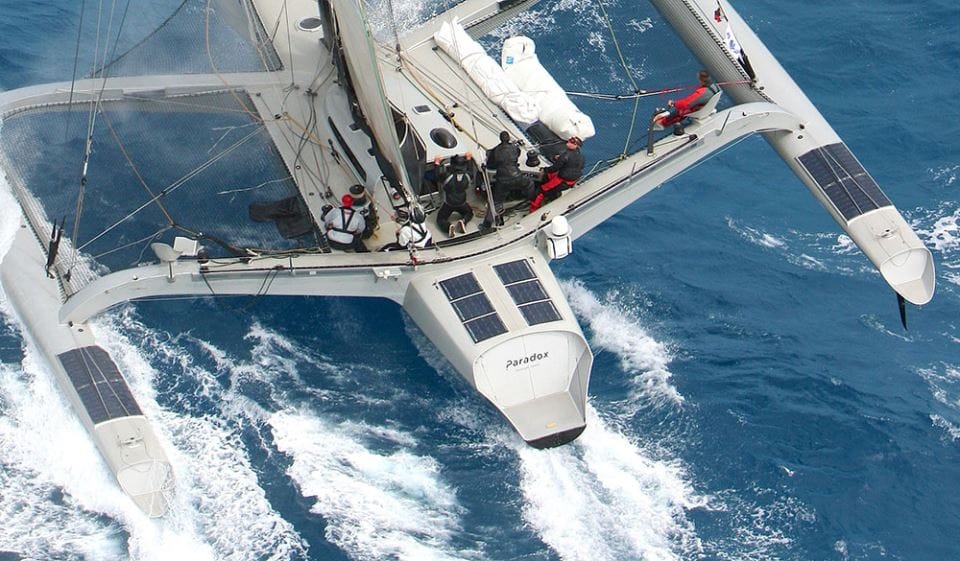
Victory Around Ireland
The highlight of Flynn’s 2024 season was the Round Ireland Race. It was Paradox’s first major event under his ownership, and it marked the end of a meticulous refit and the beginning of her new chapter on the racecourse.
“We went into it with everything dialed in,” Flynn recalls. “All gear fully tested post-refit and a full sense of confidence in the boat. The goal was to see what she could really do—and she delivered.”
Sailing with a mixed crew of experienced multihull sailors and friends who had become “trimaran addicts,” Davis and Flynn put together a near-flawless campaign. Paradox powered around the 704-nautical mile course at speed, delivering exactly the kind of performance she was built for.
“We had good conditions—steady pressure, could have handled quite a bit more, but enough breeze to let the boat stretch her legs a bit,” says Flynn. “Honestly, it felt effortless at times. She just eats up the miles.”
The result was a clean sweep: line honours and first in class, achieved with what Flynn modestly describes as a “comfortable margin.” It was a validation not just of the boat’s potential, but also of the vision he’d had when buying her.
“That was the moment everything came together,” he says. “After all the research, the decision-making, the refit work, and the training, we proved that Paradox could still win—and that we’d made the right call.”
Specs at a Glance: Paradox 3
Type: Custom racing/cruising trimaran
Designer: Nigel Irens
Builder: Custom Multihulls (USA)
Length: 63 feet (approx. 19.2m)
Beam: 14.5 m
Displacement: 8.4 tonnes
Foils: C-foils and for lift and increased righting moment at speed
Top Speed: In excess of 39 knots recorded
Accommodation: Sleeps 8 with fore and aft cabins, plus bunks in salon
Systems: New 75hp Volvo engine, upgraded solar, full navigation and comms suite
One of the standout performance features of Paradox is her set of curved C-foils – as Flynn explains:
“When you get up into the higher speeds – 17 knots or more – you drop the leeward foil, and it gives you that extra lift and righting moment that lets the boat really stretch its legs.”
The effect is not to make the boat fully foil-borne like an IMOCA, but to enhance control, balance, and drive at high speeds. “It’s not flying,” Flynn adds, “but it feels like it.”
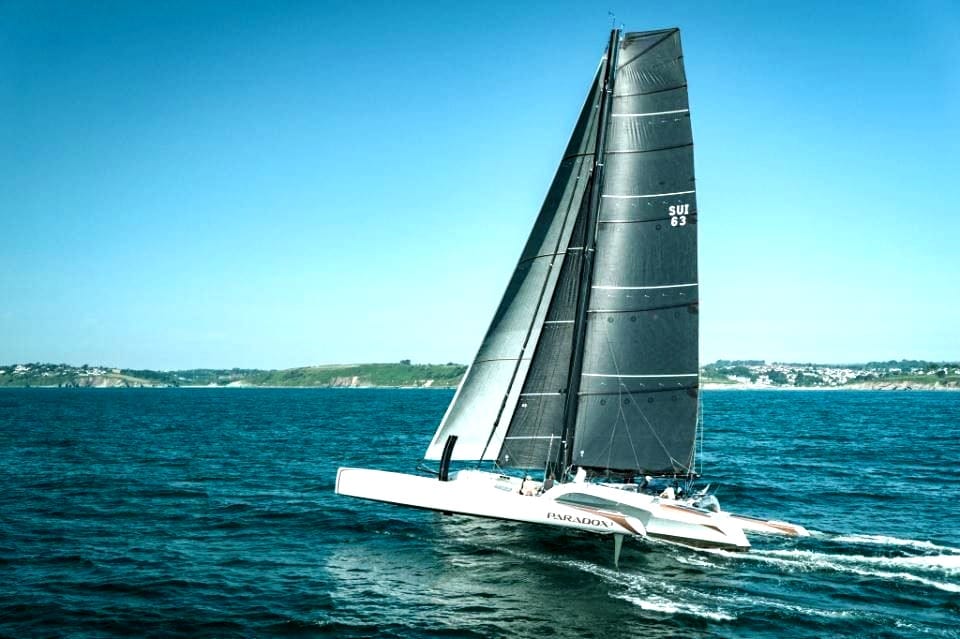
A Paradox That Makes Perfect Sense
Flynn knows some might question whether Paradox was an obvious choice for someone returning to sailing after a long break.
“I get that,” he says. “But with the right support, the right skipper, and the right training, it’s totally possible. The idea was never to do this solo from day one. I’ve put in the time, sailed extensively, and I’ve learned what I needed to.”
He even bought a small 30-foot carbon trimaran—Seaon 96—to accelerate his multihull learning curve.
“My goal is to be able to run everything on Paradox myself—not necessarily solo, but to understand every system.”
From Lake Geneva in a family dayboat to one of the fastest cruising trimarans on the water, Paul Flynn’s return to sailing is anything but conventional. Then again, when you are someone who likes to chase 30 knots across the ocean while sautéing onions below deck, convention is probably the last thing on your mind.


